#india to south africa
Text

#free palestine#israel#politics#twitter#british#uk#india#south africa#colonization#democrats#republicans#woc
3K notes
·
View notes
Text

Glossy Ibis (Plegadis falcinellus), family Threskiornithidae, order Pelicaniformes, found in the Eastern U.S., Africa, Australia, and South Asia
photograph by Sanjay Lunkad
#ibis#wading bird#plegadis#threskiornithidae#pelicaniformes#bird#ornithology#animals#nature#india#asia#africa#north america#south america
628 notes
·
View notes
Text


this aged poorly given that argentina withdrew from brics
original
#hws china#hws russia#hws iran#hws persia#hws argentina#hws brazil#hws saudi arabia#hws south africa#hws ethiopia#aph russia#aph china#aph india#aph iran#aph persia#aph argentina#aph brazil#aph south africa#aph saudi arabia#aph ethiopia#hws world#hetalia#hws#aph#nyo china#fem china#why are over half of the brics memes on google images in portuguese#my favorite thing about brics is that the heads of states in press photos are never in order of the acronym
266 notes
·
View notes
Text
#free palestine#palestine#anti israel#anti idf#anti zionism#nato#Ukraine#Russia#global news#Brics#brics nations#china#Brazil#South Africa#Europe#India#politics#congo genocide#Britain
81 notes
·
View notes
Text
Congratulations to all the teams for defeating the colonisers at their own game.

#cricket world cup 2023#cricket#indian cricket team#cwc23#cwc 2023#india#new zealand cricket#south africa#australia#Pakistan#afghanistan#netherlands#bangladesh#sri lanka#england#england cricket#afghanistan cricket#cricket world cup#colonialism#colonisers#colonizers#english cricket#a heartiest#fuck you#bcci#iccworldcup#icc#virat kohli#desi#desiblr
134 notes
·
View notes
Text
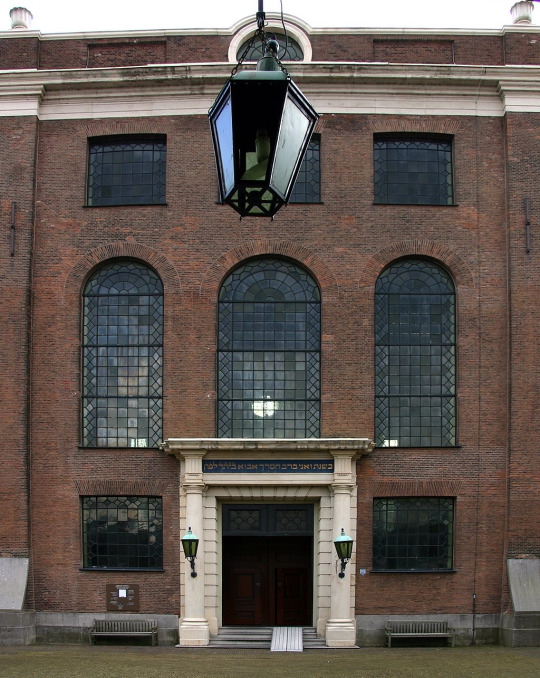

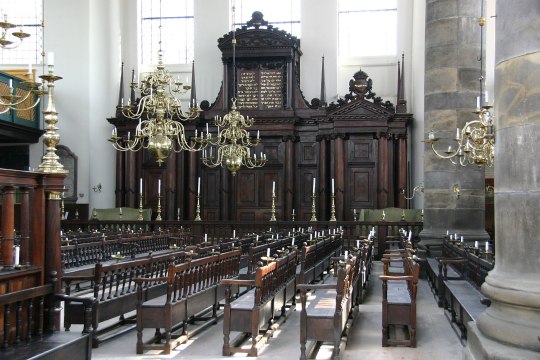

the portugese synagogue in amsterdam in the netherlands. it was founded in 1675.
while most expelled sephardic jews headed to the maghreb, ottoman territories in the middle east and eastern europe, or european colonies around the world, a minority went elsewhere in western europe, mainly to england or the netherlands. the sephardic community in the latter became the largest and richest in europe during the dutch golden age. despite the netherlands' proximity to germany, they predate the arrival of ashkenazi jews to the country by about three centuries.
#netherlands#architecture#interior#worship#jewish#sephardic#my posts#there were also hungarian sephardic jews but that's a conversation for another day#i assume most of the sephardim who came to other places in non ottoman europe were rich enough to not face the brunt of their govts#pretty sure dutch sephardim ended up in dutch colonies too like in india or south africa#not really sure about the latter since i know most of the white jews there were specifically from lithuania. long story#most of the ones who went to the americas were straight from spain/portugal or were english
39 notes
·
View notes
Text
The next set of Donkeyskin tales in Cinderella Tales from Around the World take us first to Turkey and Syria, then down to South and East Africa, and then back into Asia through Sri Lanka, India, and finally Japan.
*There are two versions from Turkey in this collection (@faintingheroine). In one, the king resolves to marry his daughter because she fits her dead mother's clothes; she requests gowns that resemble "the sky with stars," "the ground with flowers," and "the sea with fishes," and as in the Italian versions, she disguises herself in a suit made of wood and calls herself "Wooden Mary." In the other, her finger fits her mother's ring; at the advice of a fairy, she requests gowns of gold, silver, and pearls, and then a long fur coat, all of which the devil supplies; after she runs away, she lives alone in a cave for six years before the prince finds her and brings her to the palace. In both versions, the events to which she follows the prince in her finery are three royal weddings in other kingdoms; at the weddings, the prince either gives her three valuable trinkets (version #2), or else she steals them from him (version #1). Then when the prince falls ill with longing for her, she bakes cakes or pastries for him and slips the three trinkets inside, leading to her discovery.
*The Syrian variant is a "heroine hides inside a hollow object" version, in this case a chest. It also portrays the father as "a rich Jew." While this means the heroine herself is also Jewish, which could be good representation, I doubt it was meant that way; since her Jewishness is only mentioned once in the text, while her father is constantly called "the Jew," I'm afraid it's antisemitism, implying that only a Jew would try to marry his own daughter. Especially because in the end, his daughter refuses to forgive him and the prince has him executed.
*The two South African tales aren't exactly Donkeyskin tales as Europe knows them, but they do feature a persecuted heroine dressed in animal skin. In both of these tales, a king or a chief has two wives, each with a daughter.
**In Nya-Nya Bulembu, the king favors one wife and daughter but scorns and abuses the other wife and daughter, and he forces the unfavored daughter to wear the mossy green skin of a water monster so everyone will despise her. But one day she meets an old fairy man who gives her a magic stick that will temporarily restore her human form and bring her food each day. One day a prince comes to visit, sees her during this time, and knowing her true appearance, asks to marry the "monster." When she bathes before the wedding, the green skin floats away on the river, revealing her beauty to all. Meanwhile, her stepsister – a kind girl and a friend to her, in contrast to her cruel mother – is carried away by pigeons, which serves as her wicked parents' punishment as they assume she's dead. But really she's taken to another kingdom where she marries the king and lives happily ever after too.
**In Baboon-Skins, the heroine's stepmother and stepsister are jealous of her beauty, so to protect herself and her mother from their abuse, the girl dresses herself in baboon skins to hide her beauty. Still, she remains graceful and charming, and when a young chief's servants come looking for two brides for their master, her demeanor charms them just as her stepsister's beauty does, and they choose them both. At first the chief is angry, thinking a girl who hides her appearance must be ugly, but her demeanor wins him over too, and on the wedding day, she finally discards the skins.
*A French-language version from Mauritius is called Donkeyskin and basically a transplant of Perrault's version, except for a twist at the end: the prince doesn't get sick, but secretly meets with Donkeyskin after seeing her undisguised and falling in love with her, and urges her to put a ring in a cake that his mother the queen has already ordered her to bake. When she does and he eats the cake, he holds the ring at the back of his throat, pretending it's stuck, and no maiden but Donkeyskin can pull it out.
*The tale from Sri Lanka is called The Scab Girl and is only vaguely a Donkeyskin tale. A baby girl is abandoned by her parents because they wanted a son, but two cranes find her and raise her in a cave. When she grows up, a wicked "Rakshi" discovers her and tries to eat her, so the cranes dress her in cloth covered with scabs to make her look disgusting and inedible, then send her out into the world. She becomes a scullery maid at the king's palace, but secretly takes off her scab cloth to bathe, and eventually her beauty is discovered by the king, who marries her.
*There are three Indian variants, which also bear only a slight resemblance to the European versions, and none of which include attempted incest:
**In The Disguised Princess, the heroine is the eldest of three sisters and betrothed to a prince. But on her wedding day, her jealous younger sisters put sugar in her palanquin, it attracts flies, the prince thinks the flies are attracted to her, and in disgust he has his servants abandon her in the jungle. There she meets a carpenter and has him build her a wooden suit that disguises her as a man. She journeys to the prince's palace, where she wins the prince's favor and becomes a head servant. Meanwhile, the prince is about to marry another princess, but "by accident," when the "man of wood" meets the bride, "he" knocks out her eye with his wooden hand, making her repulsive to the prince. Soon afterward, a washerman tells the prince that every day, the "man of wood" takes off his wooden shell to bathe and reveals a beautiful human form. The Prince sends for "him" and demands to see "his" beauty, and so the princess reveals herself, and the prince marries her.
**In The King and the Fairy, a beautiful golden-haired fairy is persecuted by a Deo (giant), who wants to kill her because she refused to marry him. So she disguises herself in a leather robe covered with treacle, which attracts flies. She becomes a lowly servant in an old woman's house, but one day as she bathes, one of her hairs floats downstream. A prince finds the beautiful golden hair strand and resolves to marry the girl whose head it came from. He invites all the people in the land to a feast; the fairy comes in her disguise, and an elephant approaches her and lifts her up three times, which means that she's the prince's destined bride. The prince is disgusted by her, until he learns from some watchmen that every night, four fairies come and remove her disguise to bathe and perfume her, revealing her true beauty. When she tells him her story, he devises a trick to kill the Deo, leaving the fairy free to resume her true form and marry the prince.
*In The Princess and the Cat, the princess has an enormous pet cat who becomes jealous of all her suitors and claws at them until they run for their lives. To escape from the cat's possessiveness, she runs away, disguises herself in a coat of smelly skins, and becomes known as Chamni ("skin-woman"). She becomes a servant at the prince's palace and is sent out each day to tend the elephants, and when she's alone, she takes off the skin coat. One day the prince sees her, falls in love with her, learns her story, and marries her. When the cat learns of her marriage he comes after the couple, but the prince kills him, and they live happily ever after.
*Last but not least is The Wooden Bowl from Japan, which isn't really a Donkeyskin story, but does share some of the same themes. A poor peasant girl's dying mother instructs her to always wear a wooden bowl over her head to hide her beautiful face and protect her from men's lust. She obeys, and lives by laboring in the fields, mocked and scorned by her fellow workers for the bowl, until a rich farmer takes pity on her and brings her to his house to be his wife's servant. There, the farmer's son manages to catch a glimpse of her face one day, falls in love with her, and resolves to marry her. His relatives object because of her low birth and her oddness, and though she loves him, she refuses his proposal so as not to cause discord. But in a dream, her mother's spirit urges her to accept. On their wedding day, she tries to remove the wooden bowl, only to find that it's stuck. But when the wedding ceremony is complete, the bowl shatters, releasing a shower of pearls, jewels, gold, and silver to serve as her dowry, as well as revealing her beauty.
@ariel-seagull-wings, @themousefromfantasyland, @adarkrainbow
#cinderella#donkeyskin#cinderella tales from around the world#heidi ann heiner#fairy tale#variations#turkey#syria#south africa#sri lanka#india#japan#tw: violence#tw: antisemitism#tw: incest
19 notes
·
View notes
Text
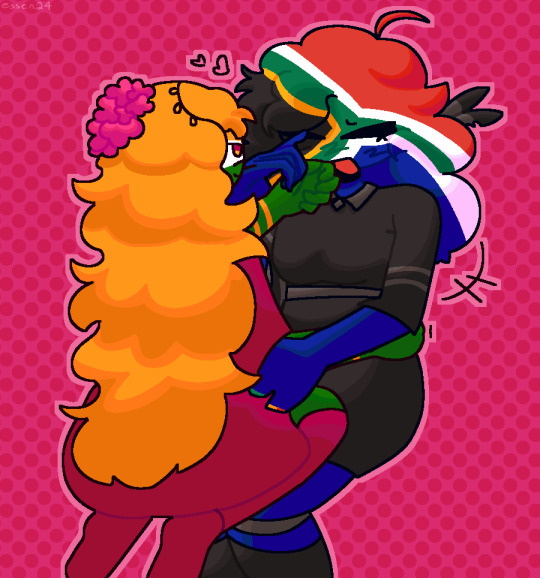
commission
#essen draws#countryhumans#countryhumans art#countryhumans india#countryhumans south africa#countryhumans south africa x india#the commissioners designs have hair thats why they have it
20 notes
·
View notes
Text
so this is a thing that's happening:
kremlin's been sending literal russian flags to africa
"“The Russian flag has become a symbol of resistance in West Africa, affiliated with anti-West and anti-French attitudes,” said Kyle Walter, the head of research at Logically, a technology company that tracked an increase of pro-Russian and anti-French narratives related to Niger in the wake of a coup there this summer."
(the full article at nyt -- i know it's a paid subscription so here is the gist)
the russian flag is popular in west african countries as a protest symbol:
"After military rulers in Niger ousted the civilian president in late July, a wave of pro-Russian sentiment spread throughout the capital, coupled with widespread anger against France, Niger’s former colonizer and a longtime security ally. France’s ambassador to Niger left on Wednesday. French troops positioned in the country are set to depart by the end of the year."
and also because they're fashionable:
"“They just look so cool,” Rédouane Halidou, 21, said as he visited a tiny tailor workshop in a residential neighborhood of Niamey one morning. Two freshly sewn polo shirts were displayed on a table, one in Niger’s green, white and orange, another in Russia’s red, white and blue."

"They also make a catchy political statement. Russia is seen by many young Africans as an anticolonial power, there to help them cast off their colonial past and write a new chapter of national history that has nothing to do with democracy, which many associate with exploitative partnerships with Western countries, corruption and poverty."
#i'm only hearing about the influence of russia in china and india but hardly anything about africa (or south america)#tons of pro russian propaganda on twitter is in spanish#the west tends to think it's obvious that russia is losing the “culture war” but it's not that simple#there is evidence that russia is deliberately participating in the spread of its flags thru africa#war
36 notes
·
View notes
Text
On May 28, 1914, the Institut für Schiffs-und Tropenkrankheiten (Institute for Maritime and Tropical Diseases, ISTK) in Hamburg began operations in a complex of new brick buildings on the bank of the Elb. The buildings were designed by Fritz Schumacher, who had become the Head of Hamburg’s building department (Leiter des Hochbauamtes) in 1909 after a “flood of architectural projects” accumulated following the industrialization of the harbor in the 1880s and the “new housing and working conditions” that followed. The ISTK was one of these projects, connected to the port by its [...] mission: to research and heal tropical illnesses; [...] to support the Hamburg Port [...]; and to support endeavors of the German Empire overseas.
First established in 1900 by Bernhard Nocht, chief of the Port Medical Service, the ISTK originally operated out of an existing building, but by 1909, when the Hamburg Colonial Institute became its parent organization (and Schumacher was hired by the Hamburg Senate), the operations of the ISTK had outgrown [...]. [I]ts commission by the city was an opportunity for Schumacher to show how he could contribute to guiding the city’s economic and architectural growth in tandem, and for Nocht, an opportunity to establish an unprecedented spatial paradigm for the field of Tropical Medicine that anchored the new frontier of science in the German Empire. [...]
[There was a] shared drive to contribute to the [...] wealth of Hamburg within the context of its expanding global network [...]. [E]ach discipline [...] architecture and medicine were participating in a shared [...] discursive operation. [...]
---
The brick used on the ISTK façades was key to Schumacher’s larger Städtebau plan for Hamburg, which envisioned the city as a vehicle for a “harmonious” synthesis between aesthetics and economy. [...] For Schumacher, brick [was significantly preferable] [...]. Used by [...] Hamburg architects [over the past few decades], who acquired their penchant for neo-gothic brickwork at the Hanover school, brick had both a historical presence and aesthetic pedigree in Hamburg [...]. [T]his material had already been used in Die Speicherstadt, a warehouse district in Hamburg where unequal social conditions had only grown more exacerbated [...]. Die Speicherstadt was constructed in three phases [beginning] in 1883 [...]. By serving the port, the warehouses facilitated the expansion and security of Hamburg’s wealth. [...] Yet the collective profits accrued to the city by these buildings [...] did not increase economic prosperity and social equity for all. [...] [A] residential area for harbor workers was demolished to make way for the warehouses. After the contract for the port expansion was negotiated in 1881, over 20,000 people were pushed out of their homes and into adjacent areas of the city, which soon became overcrowded [...]. In turn, these [...] areas of the city [...] were the worst hit by the Hamburg cholera epidemic of 1892, the most devastating in Europe that year. The 1892 cholera epidemic [...] articulated the growing inability of the Hamburg Senate, comprising the city’s elite, to manage class relationships [...] [in such] a city that was explicitly run by and for the merchant class [...].
In Hamburg, the response to such an ugly disease of the masses was the enforcement of quarantine methods that pushed the working class into the suburbs, isolated immigrants on an island, and separated the sick according to racial identity.
In partnership with the German Empire, Hamburg established new hygiene institutions in the city, including the Port Medical Service (a progenitor of the ISTK). [...] [T]he discourse of [creating the school for tropical medicine] centered around city building and nation building, brick by brick, mark by mark.
---
Just as the exterior condition of the building was, for Schumacher, part of a much larger plan for the city, the program of the building and its interior were part of the German Empire and Tropical Medicine’s much larger interest in controlling the health and wealth of its nation and colonies. [...]
Yet the establishment of the ISTK marked a critical shift in medical thinking [...]. And while the ISTK was not the only institution in Europe to form around the conception and perceived threat of tropical diseases, it was the first to build a facility specifically to support their “exploration and combat” in lockstep, as Nocht described it.
The field of Tropical Medicine had been established in Germany by the very same journal Nocht published his overview of the ISTK. The Archiv für Schiffs- und Tropen-Hygiene unter besonderer Berücksichtigung der Pathologie und Therapie was first published in 1897, the same year that the German Empire claimed Kiaochow (northeast China) and about two years after it claimed Southwest Africa (Namibia), Cameroon, Togo, East Africa (Tanzania, Burundi, Rwanda), New Guinea (today the northern part of Papua New Guinea), and the Marshall Islands; two years later, it would also claim the Caroline Islands, Palau, Mariana Islands (today Micronesia), and Samoa (today Western Samoa).
---
The inaugural journal [...] marked a paradigm shift [...]. In his opening letter, the editor stated that the aim of Tropical Medicine is to “provide the white race with a home in the tropics.” [...]
As part of the institute’s agenda to support the expansion of the Empire through teaching and development [...], members of the ISTK contributed to the Deutsches Kolonial Lexikon, a three-volume series completed in 1914 (in the same year as the new ISTK buildings) and published in 1920. The three volumes contained maps of the colonies coded to show the areas that were considered “healthy” for Europeans, along with recommended building guidelines for hospitals in the tropics. [...] "Natives" were given separate facilities [...]. The hospital at the ISTK was similarly divided according to identity. An essentializing belief in “intrinsic factors” determined by skin color, constitutive to Tropical Medicine, materialized in the building’s circulation. Potential patients were assessed in the main building to determine their next destination in the hospital. A room labeled “Farbige” (colored) - visible in both Nocht and Schumacher’s publications - shows that the hospital segregated people of color from whites. [...]
---
Despite belonging to two different disciplines [medicine and architecture], both Nocht and Schumacher’s publications articulate an understanding of health [...] that is linked to concepts of identity separating white upper-class German Europeans from others. [In] Hamburg [...] recent growth of the shipping industry and overt engagement of the German Empire in colonialism brought even more distant global connections to its port. For Schumacher, Hamburg’s presence in a global network meant it needed to strengthen its local identity and economy [by purposefully seeking to showcase "traditional" northern German neo-gothic brickwork while elevating local brick industry] lest it grow too far from its roots. In the case of Tropical Medicine at the ISTK, the “tropics” seemed to act as a foil for the European identity - a constructed category through which the European identity could redescribe itself by exclusion [...].
What it meant to be sick or healthy was taken up by both medicine and architecture - [...] neither in a vacuum.
---
All text above by: Carrie Bly. "Mediums of Medicine: The Institute for Maritime and Tropical Diseases in Hamburg". Sick Architecture series published by e-flux Architecture. November 2020. [Bold emphasis and some paragraph breaks/contractions added by me. Text within brackets added by me for clarity. Presented here for commentary, teaching, criticism purposes.]
#abolition#ecology#sorry i know its long ive been looking at this in my drafts for a long long time trying to condense#but its such a rich comparison that i didnt wanna lessen the impact of blys work here#bly in 2022 did dissertation defense in architecture history and theory on political economy of steel in US in 20s and 30#add this to our conversations about brazilian eugenics in 1930s explicitly conflating hygiene modernist architecture and white supremacy#and british tropical medicine establishment in colonial india#and US sanitation and antimosquito campaigns in 1910s panama using jim crow laws and segregation and forcibly testing local women#see chakrabartis work on tropical medicine and empire in south asia and fahim amirs cloudy swords#and greg mitmans work on connections between#US tropical medicine schools and fruit plantations in central america and US military occupation of philippines and rubber in west africa
13 notes
·
View notes
Text

Found this on WhatsApp. India really out for everybody's blood in this World Cup 😂
Next match with South Africa is in my hometown :D Sad that I was not able to get a ticket :c
#lol#cricket#india#desi tumblr#desi tag#desiblr#desi#original post#not incorrect quotes#sri lanka#england#bangladesh#pakistan#australia#new zealand#afghanistan#south africa
30 notes
·
View notes
Text
China isn’t the problem
Russia isn’t the problem
Iran isn’t the problem
India isn’t the problem
Pakistan isn’t the problem
South Africa is not the problem
North Korea
99% of the world’s problems would disappear with the USA.
#free palestine#palestine#anti israel#anti idf#free gaza#china#russia#iran#india#South Africa#Pakistan#anti america#anti zionism#anti colonialism#anti imperialism#North Korea#neo colonialism#anti western liberalism
18 notes
·
View notes
Text
Lula wants Brazil, South Africa, India in UN Council
The president of Brazil defended this Tuesday (22), the opening day of the BRICS Summit, that in addition to Russia and China, the other countries of the bloc have a permanent seat on the United Nations Security Council. He also said he favored the entry of new members into BRICS.

Brazilian president Luiz Inácio Lula da Silva defended this Tuesday (22) all members of BRICS – a group currently formed by Brazil, Russia, India, China, and South Africa – become permanent members of the Security Council of the United Nations (UN). Currently, only Russia and China are. “We need to convince Russia and China that Brazil, South Africa, and India can join the Security Council.”
In Johannesburg, South Africa, for the BRICS Summit (pictured above, the landing), Lula also defended the entry of new members into the bloc. “This is a debate we will have. Also, to allow the entry of new countries, we have to limit [the discussion] to some subject everyone agrees on. If there is no commitment from the countries joining the BRICS, it could become a Tower of Babel. We are building this. From this meeting here, I think something very important could emerge about the entry of new countries. I am in favor of the entry of several countries. We would become strong.”
Continue reading.
#brazil#politics#india#south africa#united nations#brazilian politics#luiz inacio lula da silva#foreign policy#mod nise da silveira#image description in alt#brics
48 notes
·
View notes
Text
CHEEKU YOU GOAT, YOU FUCKING PHENOMENAL MIRACLE BABY
49 CENTURIES 🥰🥳🥰🥳🥳🥰🥳🥰
🧿🧿🧿🧿🧿🧿🧿🧿🧿🧿🧿🧿🧿🧿
#ind vs sa#india vs south africa#india for cwc 2023#cwc 2023#cwc23#viratkohli#viratfans#viratians#cheeku
22 notes
·
View notes
Text


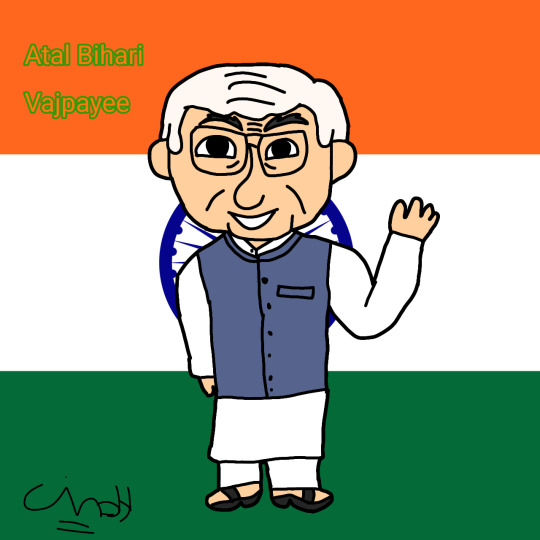
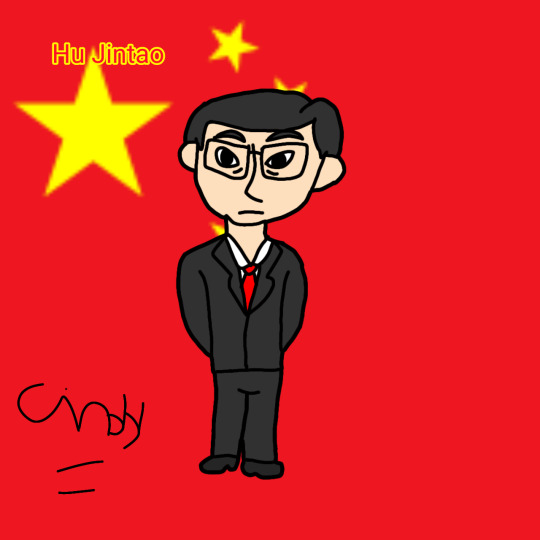



B.R.I.C.S. but in 2003 (2000s)
I was inspired with @/viktor_regnsky Eggcountries an CountryHumans version.
That's why I draw them.
#brics#brazil#russia#india#china#south africa#world leaders#politics#lolitics#cindy the cat pink art#cindy the cat pink#countryhumans#luiz inacio lula da silva#vladimir putin#atal bihari vajpayee#hu jintao#thabo mbeki
16 notes
·
View notes